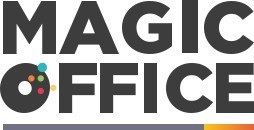
Understanding Control Testing
Decoding the Essence of Control Testing
Control testing is a vital component within the broader landscape of risk management and compliance for Indian companies. It involves scrutinizing and evaluating the processes and procedures that a company has in place to ensure the accuracy and reliability of their financial reporting. This includes ensuring that internal controls are effective in mitigating risks that could lead to material misstatements in financial statements. Internal controls form the backbone of a company's operations, directly impacting its ability to maintain effective risk management. Properly conducted control testing helps auditors determine whether these internal controls are functioning as intended. It encompasses various audit procedures, such as testing controls and substantive testing, to collect evidence and ensure compliance with regulatory standards. Control testing is crucial in the context of financial reporting, as it assists management and auditors in identifying potential weaknesses in internal controls that can trigger significant risks. Substantive procedures and tests controls are integral to audit procedures, providing a clear picture of the control risk involved. Auditors conduct control testing by accessing detailed procedures, evidence, and tests that critically examine the effectiveness controls have on safeguarding assets, ensuring accuracy, and preventing fraud. This rigorous process ultimately strengthens the credibility and trustworthiness of a company's financial reporting. For Indian companies, the landscape of control testing is continuously evolving, with several decision-making tools contributing to enhancing efficiency and ensuring robust internal audits. By understanding the nuances and implications of control testing, companies can better prepare for audits and maintain accountability and transparency across all functions.The Role of Control Testing in Indian Companies
Integrating Control Testing with Corporate Strategies
Indian companies are increasingly recognizing the importance of incorporating control testing into their corporate strategies to minimize risks and ensure compliance with regulatory standards. Control testing acts as a safeguard, providing evidence that internal controls are both established and functioning effectively. This process is crucial for mitigating control risk, which can lead to material misstatements in financial statements.
Control testing involves auditing and evaluating existing internal controls to determine their effectiveness and efficiency in managing risks. These procedures are aligned with the company's objectives, allowing businesses to keep a pulse on their internal operations. Consequently, companies can better manage and align business processes to enhance operational efficiency and project timelines.
Through rigorous testing controls, Indian enterprises can maintain control over their financial reporting, ensure accuracy in their financial statements, and support their claims of compliance to stakeholders. These tests also involve substantive procedures, including tests controls and substantive testing, to provide deeper insights into potential risks and their management.
Additionally, the auditors involved in control testing play a critical role. By conducting comprehensive audit procedures, both internal and external auditors help identify any control deficiencies, offering management the opportunity to rectify them promptly. This proactive approach ensures that businesses can continuously improve their internal controls to maintain their strategic competitiveness.
Overall, integrating control testing into company strategies not only supports risk management but also fosters a culture of transparency and accountability, setting a strong foundation for sustained growth and success in the dynamic Indian business environment.
Implementing Control Testing: Best Practices
Best Strategies and Techniques
Implementing control testing in Indian companies requires a structured approach that aligns with the organization's internal controls and risk management frameworks. Here are some strategies and techniques to consider for effective control testing.
Firstly, defining the scope and objectives of the control testing process is crucial. This helps in determining which internal controls are critical to the organization’s financial reporting and overall compliance obligations. It also aids in identifying potential areas of material misstatement.
Next, using a mix of substantive procedures and tests of controls can enhance the evidence collected. Substantive testing verifies the accuracy of financial records, while control tests evaluate the effectiveness of internal controls and compliance with audit procedures.
Incorporating technology can facilitate testing by providing better access to financial statements and other essential data. Automated tools can aid auditors in performing both substantive and procedural tests efficiently. With these tools, auditors can also minimize the risk of human errors often associated with manual testing processes.
Continuous monitoring of compliance with internal control procedures is another best practice. Regular audits and assessments help in identifying any control risks early, allowing for timely remediation. Management should ensure that the internal audit function is equipped with the right resources to conduct thorough control testing.
Finally, training programs are essential to keep the audit and compliance teams updated on best practices. This involves understanding changes in regulatory requirements and adopting new strategies for testing controls effectively. Engaging in knowledge-sharing sessions can greatly enhance the skill set of auditors, enabling them to execute control tests more precisely.
By adopting these strategies, Indian companies can strengthen their internal control systems, mitigate risks, and ensure consistency in financial reporting—an essential aspect of enhancing workplace efficiency through visual management techniques.
Common Challenges in Control Testing
Overcoming Hurdles in Control Testing
Implementing effective control testing in Indian companies can entail various challenges. It's essential to recognize these obstacles to mitigate their impact on the testing process. Here are some common challenges faced:- Lack of awareness and understanding: Not all stakeholders have a comprehensive understanding of control testing procedures. Ensuring that teams are well-informed about the objectives and significance of controls is crucial. This helps in aligning their operations with compliance and risk management efforts.
- Resource constraints: Limited resources, both in terms of personnel and technology, can hinder the thorough execution of control tests. Companies often struggle to allocate sufficient resources and expertise to carry out substantial testing processes needed to verify internal controls effectively.
- Consistent and accurate documentation: Documenting control testing efforts accurately and consistently is vital for providing substantive evidence. Without a standardized approach, companies may face increased audit risks and control testing discrepancies.
- Integration with financial reporting: Ensuring that control testing aligns with financial statement audits is another challenge. Testing must contribute to reducing the risk of material misstatement in financial reporting, which demands synchronization between control and audit procedures.
- Ensuring auditor independence: The effectiveness of an internal audit can be compromised if auditors have undue influence over the tests they perform. It’s crucial for management to establish an environment where the independence of auditors is maintained, allowing oversight of financial and substantive procedures.
- Adapting to evolving risks: As businesses continually evolve, the risks they face also change. Control testing must be adaptable to new challenges such as technological advancements or regulatory changes, which can affect the reliability of established procedures and processes.
Case Studies: Success Stories from Indian Companies
Exemplary Implementations of Control Testing
Several Indian companies have successfully enhanced their operational efficiency and reduced financial risks through effective control testing. These findings not only highlight the importance of controls but also serve as a roadmap for others looking to implement comprehensive audit procedures.
One key example involves a leading manufacturing company that integrated control testing into its internal audit framework. This allowed them to identify gaps in their internal controls and establish robust risk management strategies. By conducting testing controls and substantive testing, the company ensured effectiveness controls were in place, leading to accurate financial reporting and enhanced financial statements. The company's auditors noted a significant decrease in control risk and potential material misstatement.
Another noteworthy case is a financial institution that integrated control testing within its risk management processes. This approach empowered them to implement best practices and refine audit procedures, ultimately improving the effectiveness of the entire management system. Through systematic procedure testing and control risk mitigation, they successfully minimized compliance issues and enhanced stakeholder confidence.
In the technology sector, a software company made strides in data security by prioritizing internal controls and conducting frequent substantive procedures. By testing access controls, they were able to prevent unauthorized access, thus securing sensitive information. This approach not only helped in compliance but also built a strong reputation for reliability and integrity.
These success stories underscore the potential future trends in control testing. Companies seeking to replicate similar success models may focus on strengthening their test controls and adopting a comprehensive approach to compliance. By learning from these examples, organizations in India can better navigate the evolving landscape and secure their financial and operational objectives.
Future Trends in Control Testing
Emerging Trends for Smarter Control Testing
In the ever-evolving landscape of the corporate sector, Indian companies are at the forefront of embracing future trends in control testing. These emerging trends promise to enhance the precision and effectiveness of internal control mechanisms, fortifying organizations against financial and compliance risks.
Automation in Control Testing
Advancements in technology have paved the way for greater automation in control testing. By leveraging automation, companies are able to conduct control tests more frequently, efficiently, and accurately. This shift is reducing the dependency on manual processes, thereby minimizing the risk of human errors during testing procedures.
Integration with Advanced Analytics
With the integration of advanced analytics, organizations can now process and analyze vast amounts of data quickly and effectively. This approach aids in identifying potential control risks and provides auditors with a comprehensive view of the internal control environment.
Focus on Real-Time Monitoring
Moving beyond periodic evaluations, there's a growing emphasis on real-time monitoring of internal controls. Such immediacy allows organizations to promptly detect and address control deficiencies, keeping the risk of material misstatements at bay. Real-time monitoring ensures continuous compliance with financial reporting standards and enhances overall risk management strategies.
Collaborative Platforms and Blockchain
The rise of collaborative platforms and blockchain technology further enhances transparency and traceability within control processes. These technologies not only facilitate seamless collaboration among audit teams but also provide indisputable evidence for control transactions, thereby strengthening the audit trail.
These trends in control testing are not just about adapting to new technologies; they represent a holistic transformation aimed at bolstering the effectiveness of controls within Indian companies. By adopting these innovative approaches, organizations can better safeguard their operations against evolving risks and improve overall governance.













